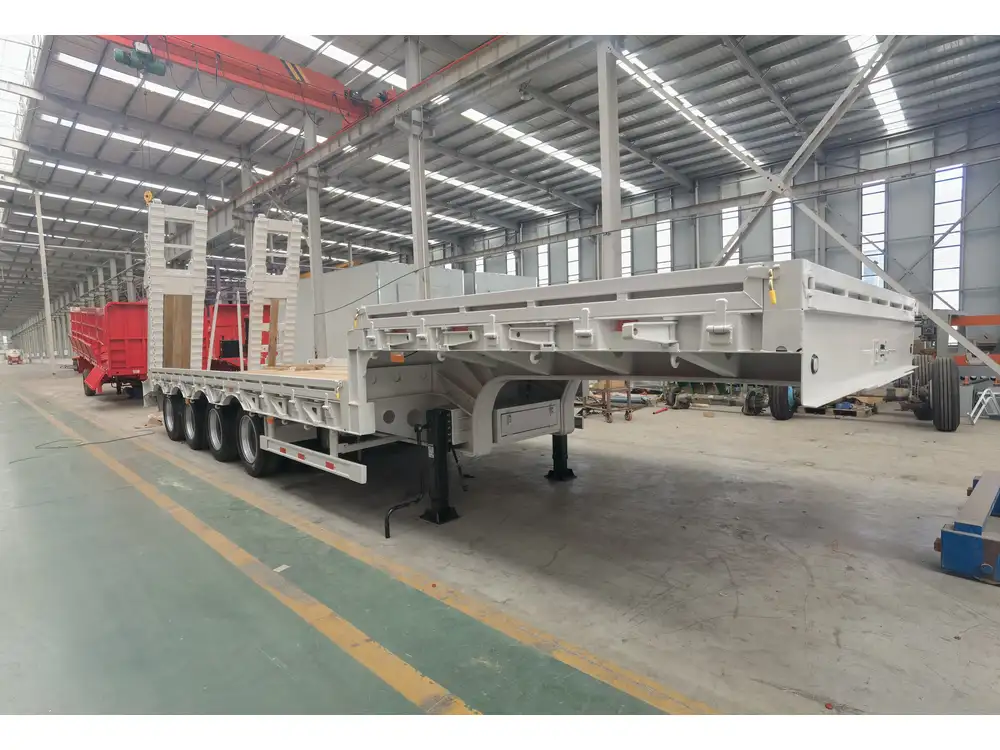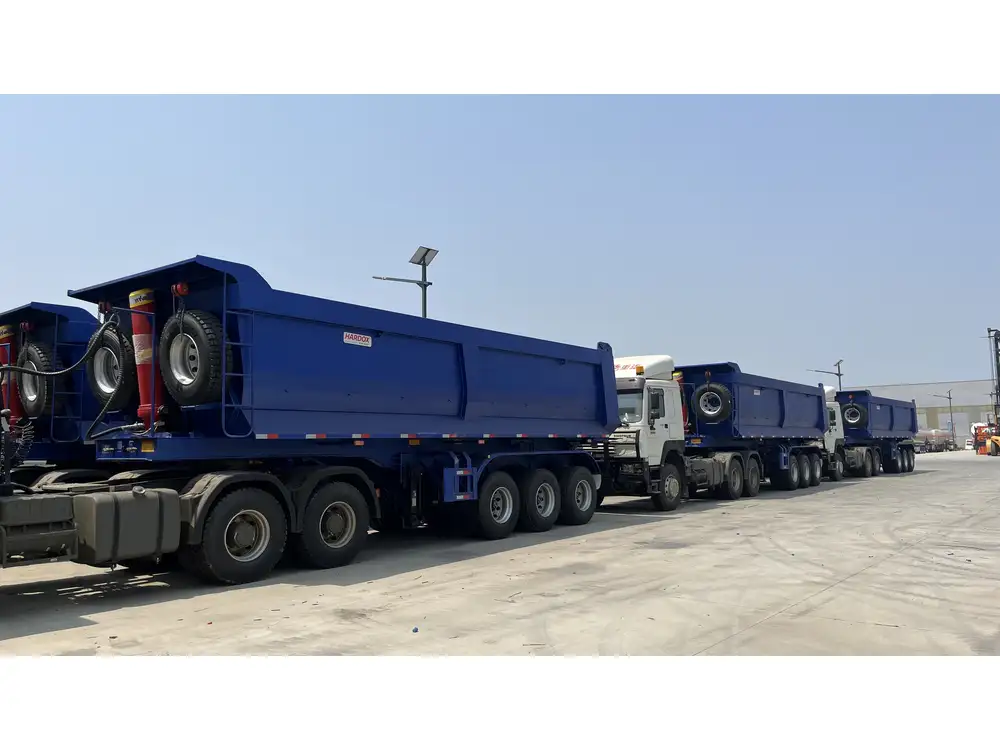When it comes to flatbed trailers, the choice of materials, particularly the wood used for the decking, plays a crucial role in durability, functionality, and overall performance. This guide delves into the types of wood commonly used on flatbed trailers, examining their properties, advantages, and drawbacks.
Understanding Flatbed Trailer Decking
Flatbed trailers are designed for transporting heavy loads. The decking, usually made from wood or composite materials, has to withstand the rigors of heavy-duty use, including exposure to the elements, heavy weights, and varying load dynamics. Selecting the appropriate wood type is therefore essential to ensure safety and longevity. Commonly used wood types include:
| Wood Type | Durability | Weight | Cost | Common Uses |
|---|---|---|---|---|
| Southern Yellow Pine | Moderate | Heavy | Affordable | General freight, agricultural products |
| Oak | High | Moderate | Moderate | Heavy machinery, construction materials |
| Douglas Fir | High | Moderate | Moderate | Lumber and construction, general freight |
| Composite Wood | High | Light | High | Special applications with specific requirements |
1. Southern Yellow Pine
Properties and Benefits
Southern Yellow Pine (SYP) is a popular choice due to its balance of affordability and strength. With a high strength-to-weight ratio, SYP is capable of supporting reasonably heavy loads without excessive bending or warping. It is treated with preservatives to enhance its resistance to decay, insects, and environmental damage.
Drawbacks
While it is a cost-effective option, SYP is prone to splitting and can degrade under extreme moisture levels if not properly treated.

2. Oak
Properties and Benefits
Oak wood, particularly red and white varieties, is renowned for its hardness and natural resistance to wear. Its dense fiber makes it ideal for heavy-duty applications and it has an aesthetic appeal that can be valuable in specific commercial markets.
Drawbacks
Oak is heavier than other wood types, which can be a consideration in weight-sensitive applications. It is also pricier than Southern Yellow Pine and can fracture under excessive impact if not handled carefully.
3. Douglas Fir
Properties and Benefits
Douglas Fir is another prime choice for flatbed decking because of its durability and ability to resist warping. It boasts high tensile strength, making it apt for heavy loads. Additionally, it tends to have fewer knots, resulting in a smoother surface that enhances load stability.
Drawbacks
While it has excellent durability, it can be more expensive than SYP. Moreover, if not treated properly, Douglas Fir can be susceptible to fungal decay in damp environments.
4. Composite Wood
Properties and Benefits
Composite wood combines wood fibers and plastic, resulting in a material known for being lightweight yet extremely durable. It generally resists rot, splintering, and insect damage, making it a suitable choice for environments where wood decking would typically suffer.
Drawbacks
The primary drawback of composite wood is its higher cost. Moreover, while it may not splinter, extreme loading could lead to cracking over time, depending on the specific resin technology used.

Factors to Consider When Choosing Wood for Flatbed Trailers
Selecting the right type of wood for your flatbed trailer decking involves carefully weighing several factors:
Load Capacity: Assess the maximum load your trailer will transport. Choose wood with a high strength-to-weight ratio to ensure safety and reliability.
Environmental Factors: Consider the climate and exposure to moisture, which can significantly affect wood properties. Treating wood properly can mitigate risks associated with decay and insects.
Weight Considerations: Heavier woods can increase the overall weight of the trailer, affecting what you can legally load. Ensure the wood you choose balances strength and weight effectively.
Maintenance Requirements: Some woods may require more maintenance than others. Consider how often you can afford to maintain or replace the decking.
Budget: While some materials may offer superior performance, they may also come at a higher price point. Consider your budget accordingly.
Comparison of Wood Types for Flatbed Trailers
Here’s a quick comparison to help identify which wood type suits your needs best.
| Attribute | Southern Yellow Pine | Oak | Douglas Fir | Composite Wood |
|---|---|---|---|---|
| Cost | Low | Moderate to High | Moderate | High |
| Weight | Heavy | Moderate | Moderate | Light |
| Durability | Moderate | High | High | High |
| Resistance to Elements | Moderate | Low to Moderate | High | High |
| Maintenance | High (with treatment) | Moderate | Moderate to High | Low |
Installation Tips for Flatbed Trailer Decking
Once you’ve selected the appropriate wood for your flatbed trailer, the next step is proper installation. This ensures that your trailer remains safe and operational over time.
Preparation: Begin by inspecting the trailer frame to ensure it is free from rust, debris, or any other issues that may compromise the integrity of the wood decking.
Cutting: Cut the wood into sections that fit your trailer. Ensure that cuts are straight to promote a secure fit.
Spacing: Implement proper spacing between planks to allow for expansion and contraction due to changes in temperature and humidity.
Securing Planks: Use high-strength bolts and fasteners to secure the planks. Pre-drilling the holes can prevent splitting.
Finishing Touches: Consider applying a protective sealant to the surface of the wood to enhance its lifespan against weather conditions and wear.

Maintenance and Care of Flatbed Trailer Decking
To prolong the lifespan of your flatbed trailer decking, regular maintenance is key. Here are essential maintenance practices:
- Regular Inspections: Schedule bi-annual inspections to identify potential issues such as rot or cracks early on.
- Cleaning: Clean the wood surface periodically to remove grime and debris. Use a pressure washer on lower power settings to avoid damaging the wood.
- Sealing: Apply sealants at regular intervals based on the wood type to protect against the elements.
Conclusion: Finding the Right Wood for Your Flatbed Trailer
Choosing the right wood for a flatbed trailer involves assessing various factors, including load-bearing capacity, resistance to environmental elements, weight, and cost. Southern Yellow Pine, Oak, Douglas Fir, and Composite wood all offer distinct advantages and disadvantages that impact overall trailer performance.
By carefully evaluating these options and following maintenance best practices, manufacturers can ensure that their flatbed trailers remain reliable and effective for years to come. With a focus on quality materials and diligent care, flatbed trailers can handle even the most challenging loads while maximizing return on investment.
In conclusion, the wood used on flatbed trailers directly influences the trailer’s performance, safety, and longevity. Therefore, a balanced approach to material selection and ongoing maintenance is essential for success in the demanding world of flatbed transportation.



